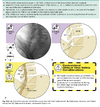- Joined
- Aug 21, 2014
- Messages
- 105
- Reaction score
- 27
- Points
- 4,651
- MD/PhD Student
I was thinking about incorporating this view for interlaminars a bit more. There’s some great papers for cervical contralateral oblique anatomy, however anybody have a good article or book with good anatomy in it. Did a lit search and found some ok stuff.
Thank you in advance
Thank you in advance

